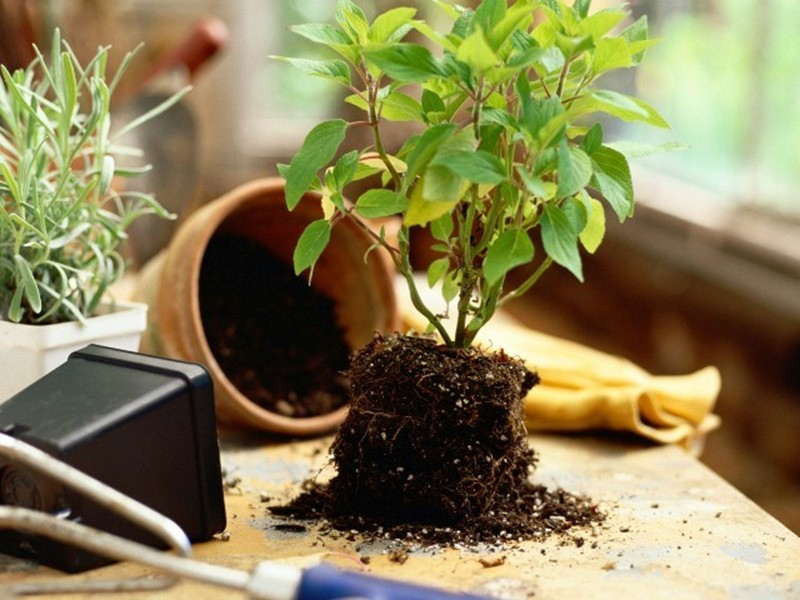Drainage in the potted plant allows the roots to breathe, allowing the flowers to develop normally. One of the main requirements for the material is that it must allow excess liquid to leave without lingering. For example, a violet or dieffenbachia can die in wet soil. Drainage material does not need to be purchased at the store, you can use what is at hand.

Crushed stone / gravel
Expanded clay is usually used as drainage. But it can be easily replaced with rubble or gravel. The only drawback of this material is the significant weighting of the pot. So it's best to use a small container, or one that won't change location too often.
Pebbles
Another free drainage material is pebbles. These small pebbles are especially loved by flower growers. Small stones are easy to let water through, do not retain it or absorb it.
Pebbles, like crushed stone, also have one significant disadvantage - heaviness. A pot filled with small stones can become overwhelming. But on the other hand, if you use a plastic container for the plant, then the pebbles will give it stability and it will be difficult to turn it over for children and pets.
The stones have high thermal conductivity. Therefore, plants that spend the winter on a windowsill can become hypothermic and sick.
Styrofoam
Styrofoam perfectly replaces drainage stones. It fits the bill and can be found anywhere. It is common for us not to throw boxes out of the equipment, but it may definitely contain the material we need.
To put it on the bottom of the container, the foam must be cut into small pieces, in no case crumbled. For high-quality drainage, a layer of several centimeters is required.
Material advantages:
- availability;
- sterility;
- lack of absorbency.
Light weight can be attributed to both advantages and disadvantages. If it is a plastic pot, the unstable container may tip over under the weight of the plant. For a ceramic pot, the light weight of the foam is an undeniable plus.
Some plant lovers are afraid to use the material as drainage, as the roots of flowers can grow through the foam. This makes it difficult to transplant flowers.
Sphagnum moss
Experienced growers use sphagnum moss as drainage. The advantage of this natural material is that it can retain excess moisture. It also has disinfecting and healing properties.
You can prepare the moss yourself. It grows in wetlands or wet forests. Harvesting is best done in autumn. Before placing it in a pot, fill the moss with warm water for about an hour. During this time, it will be saturated with moisture, small insects will be destroyed. Unfortunately, not everyone can prepare it, and it is not often found on sale.
Vermiculite
Vermiculite has the following properties:
- sterility;
- resistance to infection;
- low thermal conductivity.
This material is used as a drainage layer. The soil in which vermiculite is used is less acidified, and mold and various kinds of fungi do not start in it. The material can only be purchased from a specialized store. Its only drawback is its high cost.
Construction Materials
Take your time to throw out old or broken pottery. It can be used as a drainage layer. Pieces of dishes are placed on the bottom with the convex side up. Then a small layer of coarse sand is added. If you take small material, then it can clog the holes in the bottom of the pot and the water cannot escape.
The only drawback of this material is that the roots of the plant can be damaged by the sharp edges of the debris. Broken bricks and tiles can be used as drainage material. Try not to stack too large pieces.
At first, novice florists make many mistakes, using sand, marble, egg or nut shells as a drainage material. Because of this, the risk of developing mold, stagnant water increases, which leads to sad consequences. The correct drainage material will help eliminate these problems.


